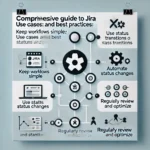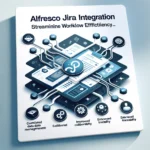UiPath vs Power Automate: In the ever-evolving landscape of automation, UiPath and Power Automate stand out as two prominent players, each offering unique capabilities to streamline business processes. This comprehensive guide will delve into the strengths, differences, and considerations when choosing between UiPath and Power Automate, providing readers with a thorough understanding of these automation titans.
Table of Contents
ToggleWhich is better, UiPath or Power Automate?
The choice between UiPath and Power Automate depends on your organization’s needs. UiPath excels in complex, enterprise-wide automation, while Power Automate offers seamless integration within Microsoft ecosystems, making it ideal for businesses invested in Microsoft technologies. Evaluate based on scalability, ease of use, and integration requirements.
UiPath: Unleashing the Power of Robotic Process Automation (RPA)
1. What is UiPath?
UiPath is a leading Robotic Process Automation (RPA) platform designed to automate repetitive and rule-based tasks. Explore its capabilities, intuitive interface, and wide-ranging applications across industries.
2. Key Features of UiPath
Delve into UiPath’s feature-rich environment, including advanced automation, intelligent data extraction, and seamless integration with various applications.
3. Use Cases and Industry Applications
Discover how UiPath has transformed industries by automating tasks in finance, healthcare, customer service, and beyond. Real-world use cases illustrate its versatility.
Power Automate: Empowering with Low-Code Automation
1. Introduction to Power Automate
Power Automate, part of the Microsoft Power Platform, empowers users to create automated workflows with minimal coding. Understand its low-code approach and integration with Microsoft 365.
2. Features and Integration Capabilities
Explore the features that make Power Automate a versatile tool, including pre-built connectors, adaptive processes, and the ability to automate tasks across Microsoft applications.
3. Industry Applications and Adoption
Witness how organizations leverage Power Automate to automate approval processes, integrate data, and enhance collaboration within Microsoft ecosystems. Case studies illustrate its impact.
Comparative Analysis: UiPath vs Power Automate
1. Scalability and Complexity
Examine the scalability of both platforms and understand when UiPath’s robust capabilities may be more suitable for complex, enterprise-wide automation projects.
2. Ease of Use and Accessibility
Compare the user-friendliness of UiPath and Power Automate, considering factors like low-code development, intuitive interfaces, and accessibility for non-technical users.
3. Integration with External Systems
Evaluate the integration capabilities of both platforms, focusing on their compatibility with various applications, APIs, and data sources.
Comparison table for UiPath vs Power Automate
| Feature | UiPath | Power Automate |
|---|---|---|
| Automation Type | Robotic Process Automation (RPA) | General Automation and Business Process Flows |
| Integration | Broad integration capabilities with various applications and systems | Seamless integration within Microsoft ecosystems |
| Coding Requirement | Provides both visual and advanced coding options | Low-code platform with minimal coding required |
| Scalability | Highly scalable, suitable for complex and large-scale automation projects | Scalable, particularly well-integrated with Microsoft technologies |
| Use Cases | Well-suited for enterprises with intricate automation needs | Ideal for businesses heavily invested in Microsoft applications |
| User Interface | Intuitive interface, suitable for technical and non-technical users | User-friendly, especially for those familiar with Microsoft environments |
| Flexibility | Offers flexibility with a range of automation possibilities | Tailored for flexibility within Microsoft 365 applications |
| Community Support | Active community and extensive resources available | Backed by the Microsoft community and ample learning resources |
| Cost Structure | License-based model, with costs varying based on usage and features | Subscription-based model with pricing tiers for different usage levels |
External Resources:
1. UiPath Official Documentation
Access UiPath’s official documentation for in-depth insights, tutorials, and resources that provide a comprehensive understanding of the platform.
2. Microsoft Power Automate Learning Resources
Explore Microsoft’s learning resources for Power Automate, offering tutorials, documentation, and community support to enhance your automation skills.
Pros and Cons of UiPath vs Power Automate
Pros and Cons of UiPath:
Pros:
- Advanced Automation: UiPath excels in handling complex, rule-based tasks, making it ideal for enterprises with intricate automation needs.
- Scalability: Highly scalable, UiPath is suitable for large-scale automation projects, providing robust solutions for diverse industries.
- Coding Flexibility: UiPath offers both visual and advanced coding options, providing flexibility for users with varying technical expertise.
- Extensive Community Support: Backed by an active community, UiPath provides a wealth of resources, tutorials, and community-driven support.
Cons:
- Learning Curve: The advanced capabilities of UiPath may result in a steeper learning curve, particularly for users new to automation.
- Cost: The licensing model for UiPath can be costly, and pricing varies based on usage and features.
Pros and Cons of Power Automate:
Pros:
- Seamless Integration: Power Automate seamlessly integrates within Microsoft ecosystems, making it an excellent choice for businesses heavily invested in Microsoft technologies.
- Low-Code Platform: With a low-code approach, Power Automate allows users to create automated workflows with minimal coding, empowering non-technical users.
- User-Friendly Interface: Power Automate provides a user-friendly interface, especially for users familiar with Microsoft applications.
- Scalability: Scalable for businesses, Power Automate is particularly well-integrated with Microsoft 365 applications.
Cons:
- Limited Complexity: While powerful, Power Automate may have limitations in handling extremely complex and intricate automation scenarios.
- Dependency on Microsoft Ecosystem: The seamless integration is a strength, but it may be a limitation for organizations not heavily reliant on Microsoft technologies.
This breakdown of pros and cons assists users in understanding the strengths and considerations of UiPath and Power Automate, aiding in the selection of the most suitable automation platform for specific business requirements.
FAQs (Frequently Asked Questions):
Q1: Which platform is better for large enterprises?
A1: For large enterprises with complex automation needs, UiPath’s scalability and advanced features may be preferable. However, Power Automate’s integration with Microsoft ecosystems makes it a strong contender for businesses heavily invested in Microsoft technologies.
Q2: Can Power Automate handle non-Microsoft applications?
A2: Yes, Power Automate supports a wide range of connectors, enabling integration with both Microsoft and non-Microsoft applications. Its versatility makes it suitable for diverse automation requirements.
Q3: Does UiPath require extensive coding skills?
A3: While UiPath is designed to be user-friendly, some complex automation scenarios may require coding skills. Power Automate, with its low-code approach, might be more accessible for users with limited coding experience.
Conclusion: Navigating the Automation Landscape
In conclusion, both UiPath and Power Automate bring substantial value to the automation landscape, each catering to different needs and preferences. Whether opting for the advanced capabilities of UiPath or the seamless integration of Power Automate, organizations can enhance efficiency, reduce errors, and propel their digital transformation journey. Understanding the strengths and considerations of these automation titans is crucial for making informed decisions that align with specific business goals.






